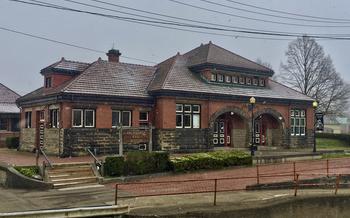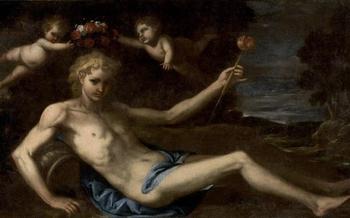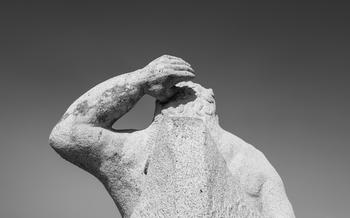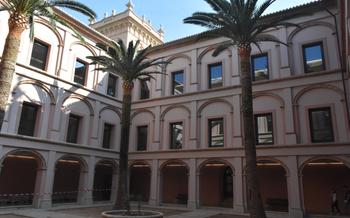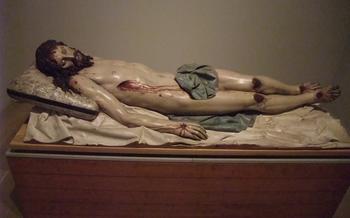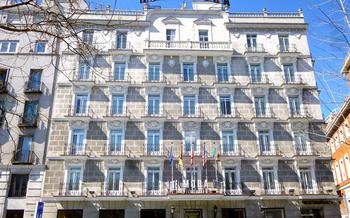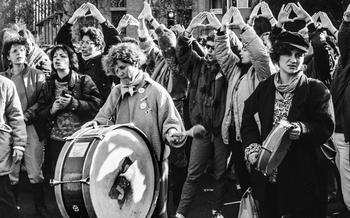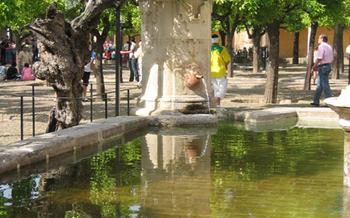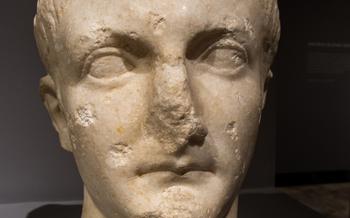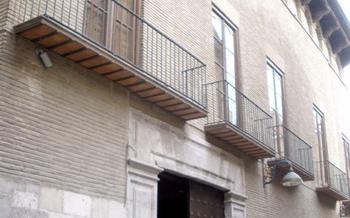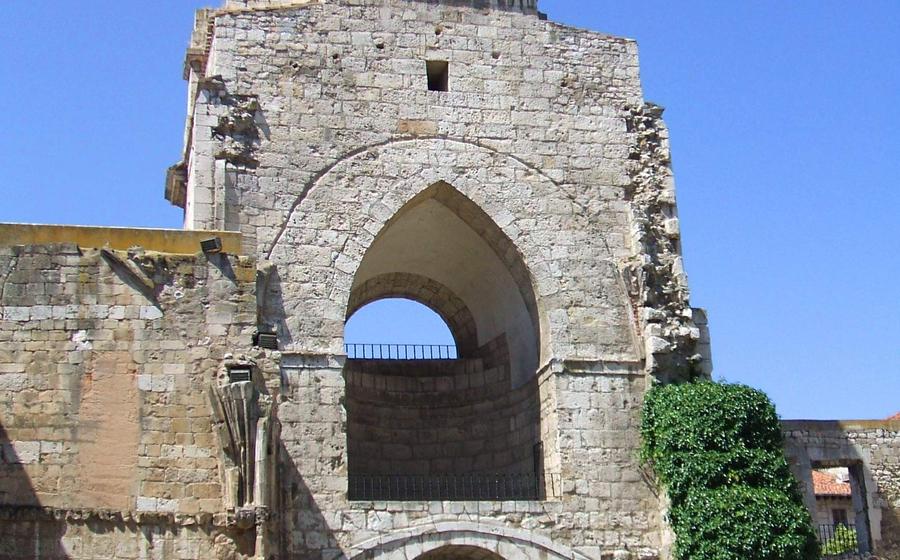
Museo Marceliano Santamaría
- Museo Marceliano Santamaría: A Hidden Gem in Burgos
- Exploring the Museum's Galleries
- Masterpieces of Spanish Art
- The Sculpture Collection: A Testament to Spanish Craftsmanship
- Religious Art: Exploring Faith and Devotion
- Portraits: Capturing the Essence of Individuals
- Landscapes and Still Lifes: The Beauty of Everyday Scenes
- Contemporary Art: Pushing the Boundaries of Tradition
- Temporary Exhibitions: A Dynamic Showcase of Art
- Educational Programs and Workshops
- Museum Shop: Unique Souvenirs and Treasures
- Accessibility and Amenities
- Insider Tip: Discover Hidden Gems Off the Beaten Path
Museo Marceliano Santamaría: A Hidden Gem in Burgos
In the heart of the historic city of Burgos, Spain, lies a hidden gem that art enthusiasts and history buffs alike should not miss: the Museo Marceliano Santamaría. Housed in a beautifully restored 16th-century palace, the museum boasts an impressive collection of Spanish art from the Middle Ages to the 20th century. From religious masterpieces to contemporary creations, the Museo Marceliano Santamaría offers a captivating journey through the artistic heritage of Spain.
The museum's building itself is a work of art, showcasing a blend of Gothic and Renaissance architectural styles. Its elegant façade, adorned with intricate carvings and a grand entrance, hints at the treasures that await visitors inside. Upon entering, one is greeted by a spacious courtyard, where a serene fountain and lush greenery create a tranquil atmosphere.
The museum's collection is as diverse as it is impressive, featuring paintings, sculptures, drawings, and decorative arts from different periods of Spanish history. Highlights include works by renowned Spanish artists such as El Greco, Francisco Goya, and Joaquín Sorolla, as well as lesser-known gems that offer a glimpse into the rich artistic traditions of Spain.
Practical information for visitors:
- Hours: Tuesday-Sunday, 10 am-2 pm and 4 pm-8 pm. Closed on Mondays.
- Admission: General admission is €5, with reduced rates for students, seniors, and groups.
- Location: Calle Fernán González, 37, 09003 Burgos, Spain.
Whether you're an art aficionado, a history buff, or simply looking for a unique and enriching experience, the Museo Marceliano Santamaría is a must-visit destination in Burgos. Prepare to be captivated by the beauty and diversity of Spanish art as you explore this hidden gem in the heart of Castile and León.
Exploring the Museum's Galleries
The Museo Marceliano Santamaría boasts a diverse range of permanent and temporary exhibits, each offering a unique perspective on Spanish art and culture. Begin your journey in the grand entrance hall, where you'll be greeted by a stunning collection of sculptures and paintings that set the tone for the rest of the museum.
As you wander through the galleries, you'll encounter a treasure trove of artistic masterpieces. The permanent collection includes works from all periods of Spanish art history, from medieval masterpieces to contemporary creations. Highlights include El Greco's "The Burial of Count Orgaz," Goya's "The Third of May 1808," and Picasso's "Guernica."
Don't miss the temporary exhibits, which showcase the works of emerging and established Spanish artists. These exhibits often feature interactive displays and educational resources that enhance the visitor experience. To make the most of your visit, consider booking a guided tour. Knowledgeable guides will provide insights into the artworks, their creators, and the historical context in which they were created.
Masterpieces of Spanish Art
Among the many treasures housed within the Museo Marceliano Santamaría, several masterpieces stand out as true pinnacles of Spanish art. One such masterpiece is "The Descent from the Cross" by Pedro Berruguete, a stunning depiction of the crucifixion and resurrection of Jesus Christ. The intricate details, vivid colors, and emotional intensity of the painting are a testament to Berruguete's skill and artistry.
Another highlight of the museum's collection is "The Annunciation" by El Greco, a groundbreaking work that captures the moment when the angel Gabriel announces to Mary that she will give birth to Jesus. El Greco's unique style, characterized by elongated figures and vibrant colors, creates a sense of ethereal beauty and mystery.
For those interested in the works of Francisco Goya, the museum boasts a collection of his powerful and evocative paintings. Among them is "The Third of May 1808," a poignant portrayal of the Spanish people's resistance against the French occupation. Goya's masterful use of light and shadow, combined with his emotional intensity, creates a deeply moving and unforgettable work of art.
These masterpieces, along with many others, offer a glimpse into the genius of Spanish artists throughout history. They showcase the diversity of styles, techniques, and themes that have shaped the rich artistic heritage of Spain.
The Sculpture Collection: A Testament to Spanish Craftsmanship
The Museo Marceliano Santamaría boasts an impressive collection of sculptures that showcases the diversity and virtuosity of Spanish craftsmanship. From intricate religious carvings to delicate Renaissance busts, the museum's sculptures offer visitors a glimpse into the evolution of this art form in Spain.
Highlights of the collection include the "Ecce Homo" by Gregorio Fernández, a moving depiction of Christ's suffering carved from polychrome wood. The "Virgin and Child" by Juan de Juni is another masterpiece, notable for its ethereal beauty and emotional intensity. Visitors can also admire works by renowned sculptors such as Alonso Berruguete, Pedro de Mena, and José de Churriguera, each representing different periods and styles of Spanish sculpture.
The evolution of sculpture in Spain is evident in the museum's collection. Early works from the Romanesque period are characterized by their stylized forms and hieratic expressions. Gothic sculptures, on the other hand, display a greater attention to realism and emotional depth. The Renaissance brought about a renewed interest in classical sculpture, leading to a proliferation of finely crafted busts and reliefs. Baroque sculptures, with their dramatic gestures and intricate ornamentation, reflect the exuberance and theatricality of the period.
To fully appreciate the nuances of sculpture art, it is helpful to pay attention to the materials used, the techniques employed, and the symbolic meanings conveyed. Stone, wood, and bronze are among the most common materials used in Spanish sculpture, each with its own unique properties and challenges. Sculptors used chisels, gouges, and other tools to shape and refine their works, creating intricate details and textures. Symbolism and iconography play an important role in Spanish religious sculpture, where figures and gestures often carry allegorical or devotional significance.
By exploring the museum's sculpture collection, visitors can gain a deeper understanding of the artistry, craftsmanship, and cultural significance of this important art form in Spain.
Religious Art: Exploring Faith and Devotion
Religion has played a pivotal role in shaping Spanish culture and art. The Museo Marceliano Santamaría houses a remarkable collection of religious artworks that offer a glimpse into the deep faith and devotion of the Spanish people.
One of the highlights of the collection is El Descendimiento, a poignant painting by the renowned artist Pedro Berruguete. This masterpiece depicts the moment when Christ's body is lowered from the cross, surrounded by grieving figures. The intricate details and expressive brushstrokes convey the profound emotions of the scene.
Another notable work is La Virgen de la Misericordia by Juan de Flandes. This painting portrays the Virgin Mary as a protective figure, sheltering a group of people under her cloak. The soft colors and gentle expressions create a sense of serenity and compassion.
The museum also features a collection of sculptures that explore religious themes. The Cristo de la Luz, carved by Gregorio Fernández, is a particularly striking example. This life-size sculpture of Christ on the cross showcases the artist's mastery of anatomy and emotional expression.
Through these religious artworks, the Museo Marceliano Santamaría provides a profound insight into the spiritual and cultural heritage of Spain. Visitors can explore the diverse artistic interpretations of faith, devotion, and the sacred, gaining a deeper understanding of the role of religion in Spanish society.
Portraits: Capturing the Essence of Individuals
The Museo Marceliano Santamaría boasts a remarkable collection of portraits, offering a glimpse into the lives and personalities of notable figures from Spanish history. These works showcase the exceptional skills of Spanish portraitists in capturing the essence of their subjects, whether through realistic depictions or symbolic representations.
One of the highlights of the collection is a portrait of King Felipe II by Juan Pantoja de la Cruz. This iconic work portrays the monarch with a stern expression and a commanding presence, emphasizing his power and authority. The artist's use of light and shadow creates a dramatic effect, highlighting the king's elaborate clothing and regal demeanor.
Another notable portrait is that of the poet Gustavo Adolfo Bécquer by Valeriano Domínguez Bécquer. This intimate portrayal captures the writer's contemplative nature, with his eyes gazing thoughtfully into the distance. The soft brushstrokes and muted colors convey a sense of vulnerability and introspection, inviting viewers to connect with the artist's inner world.
The museum also features portraits of other prominent individuals, including religious figures, military leaders, and cultural icons. These works provide a fascinating glimpse into the diverse characters and personalities that have shaped Spanish history and culture.
Through the skillful hands of Spanish portraitists, the Museo Marceliano Santamaría's collection of portraits offers visitors a unique opportunity to encounter the faces and stories of those who have left an indelible mark on Spain's rich heritage.
Landscapes and Still Lifes: The Beauty of Everyday Scenes
The Museo Marceliano Santamaría also houses a significant collection of landscapes and still lifes that capture the essence of everyday scenes and the beauty of the natural world. These works offer a glimpse into the lives and surroundings of Spanish people throughout history.
Among the highlights of the collection is a stunning landscape by Joaquín Sorolla, titled "Valencia Orange Grove." This vibrant painting depicts a lush orange grove under a bright blue sky, with sunlight filtering through the trees and casting long shadows. Sorolla's masterful use of light and color brings the scene to life, conveying the beauty and tranquility of the Spanish countryside.
Another notable work is a still life by Juan van der Hamen y León, titled "Bodegón con frutas y dulces." This exquisite painting features a carefully arranged composition of fruits, sweets, and other objects, such as a silver tray and a glass of wine. Van der Hamen's meticulous attention to detail and his use of rich, earthy colors create a sense of abundance and opulence.
These landscapes and still lifes offer visitors a chance to appreciate the diversity and richness of Spanish art, as well as to gain insights into the culture and history of the country. Whether depicting the beauty of nature or the simple pleasures of everyday life, these works offer a unique perspective on Spanish society and its artistic traditions.
Contemporary Art: Pushing the Boundaries of Tradition
The Museo Marceliano Santamaría also boasts a noteworthy collection of contemporary Spanish art, showcasing works that challenge traditional notions of art and explore new directions. These works often push the boundaries of artistic expression, inviting viewers to question and contemplate their perceptions of art.
Among the highlights of the contemporary art collection are pieces that employ unconventional materials and techniques, such as mixed media, installations, and performance art. These works challenge traditional notions of what constitutes art and engage viewers in a more interactive and participatory experience.
The museum's contemporary art collection also includes works that address social and political issues, reflecting the changing landscape of Spanish society. Artists explore themes of identity, globalization, and the human condition, using their art as a platform for social commentary and activism.
By showcasing contemporary Spanish art, the Museo Marceliano Santamaría provides a glimpse into the vibrant and ever-evolving art scene in Spain. These works offer a fresh perspective on artistic expression and encourage visitors to engage with art in new and thought-provoking ways.
Temporary Exhibitions: A Dynamic Showcase of Art
The Museo Marceliano Santamaría hosts a dynamic program of temporary exhibitions alongside its permanent collection. These exhibitions showcase a diverse range of artistic expressions, from historical retrospectives to contemporary installations. Collaborations with other institutions and artists bring new perspectives and voices to the museum's walls, fostering a vibrant dialogue between the past and the present.
Temporary exhibitions offer visitors the opportunity to delve deeper into specific themes, explore emerging trends in Spanish art, and discover new and exciting artists. Past exhibitions have showcased the works of renowned Spanish masters, such as Picasso and Dalí, as well as emerging contemporary talents.
To stay informed about upcoming exhibitions and events, visitors can check the museum's website or sign up for the museum's newsletter. Temporary exhibitions often have limited run times, so it's advisable to plan your visit accordingly to avoid missing out on these special presentations.
Educational Programs and Workshops
The Museo Marceliano Santamaría offers a range of educational programs and workshops designed to engage and inspire visitors of all ages. These programs provide an opportunity for hands-on learning, creative expression, and a deeper understanding of the museum's collection and Spanish art history.
Tailored to different audiences, including families, students, and adults, the workshops cover a variety of topics and techniques. From sketching and painting classes to sculpture workshops and art history lectures, there's something for everyone to enjoy.
The museum's experienced educators lead these programs, fostering an environment of curiosity, exploration, and creativity. Participants have the chance to learn from experts, experiment with different materials, and create their own artworks inspired by the museum's collection.
To book educational programs and workshops, visitors can contact the museum's education department or check the museum's website for upcoming events and registration details. These programs offer a unique opportunity to engage with the museum's collection in a meaningful way and gain a deeper appreciation for Spanish art and culture.
Museum Shop: Unique Souvenirs and Treasures
The Museo Marceliano Santamaría also boasts a well-stocked museum shop where visitors can take home a piece of the museum experience. The shop offers a wide range of unique souvenirs and treasures inspired by the museum's collection.
From replicas of iconic artworks to intricately designed jewelry, the shop caters to a variety of tastes and budgets. Visitors can find high-quality reproductions of famous paintings, sculptures, and decorative arts, allowing them to own a piece of Spanish artistic heritage.
The museum shop also offers a selection of books, postcards, and other educational materials related to the museum's collection and Spanish art in general. These publications provide visitors with an opportunity to delve deeper into the history and significance of the artworks they have seen in the galleries.
By making a purchase at the museum shop, visitors not only take home a tangible reminder of their visit but also support the museum's ongoing efforts to preserve and promote Spanish art and culture.
Accessibility and Amenities
The Museo Marceliano Santamaría is committed to providing an accessible and welcoming environment for all visitors. The museum is wheelchair accessible, with ramps and elevators connecting all floors. Guided tours and educational materials are available in multiple languages, ensuring that visitors from all backgrounds can enjoy and understand the museum's collection.
Amenities at the museum include a cloakroom, restrooms, and a café. The café offers a variety of refreshments and snacks, as well as a selection of local and international cuisine. Visitors can relax and enjoy a meal or beverage while taking in the beautiful surroundings of the museum.
To ensure a comfortable and enjoyable visit, the museum recommends that visitors with disabilities or specific needs contact the museum in advance. The staff is happy to assist with any special requests or arrangements to make the visit as smooth and enjoyable as possible.
Insider Tip: Discover Hidden Gems Off the Beaten Path
While the Museo Marceliano Santamaría's renowned masterpieces are a must-see, there are also hidden gems waiting to be discovered off the beaten path. Seek out the museum's lesser-known artworks, tucked away in corners or smaller galleries. These hidden treasures offer a unique perspective on Spanish art and culture.
Look for the delicate watercolors by local artist María Luisa de la Riva, capturing the essence of Burgos' landscapes. Don't miss the intricate carvings on the 16th-century choir stalls, depicting scenes from the Bible with remarkable detail. In the sculpture gallery, find the poignant statue of "The Grieving Virgin" by Juan de Juni, a masterpiece of Renaissance emotional expression.
To avoid crowds and enjoy a more intimate museum experience, visit during off-peak hours or on weekdays. Take your time to explore each gallery, allowing yourself to be captivated by the lesser-known works that often reveal unexpected insights into Spanish art and history.
